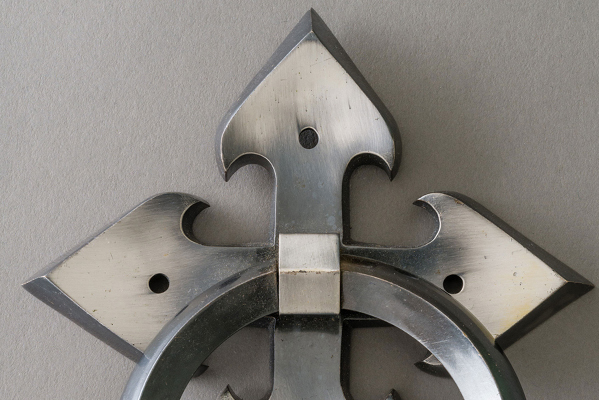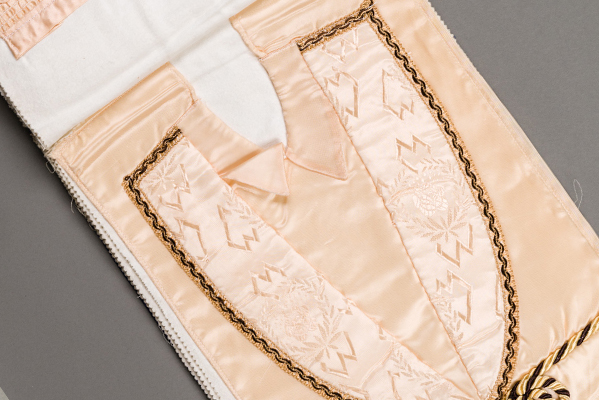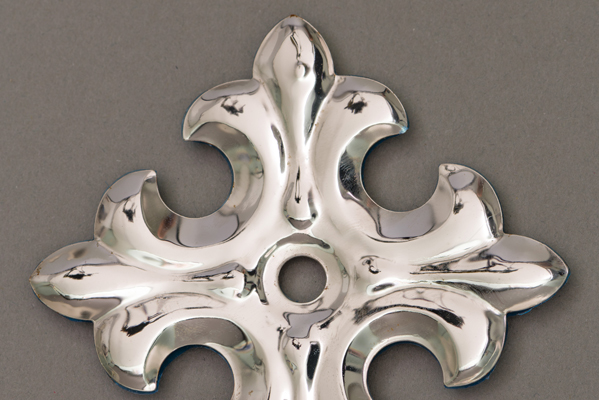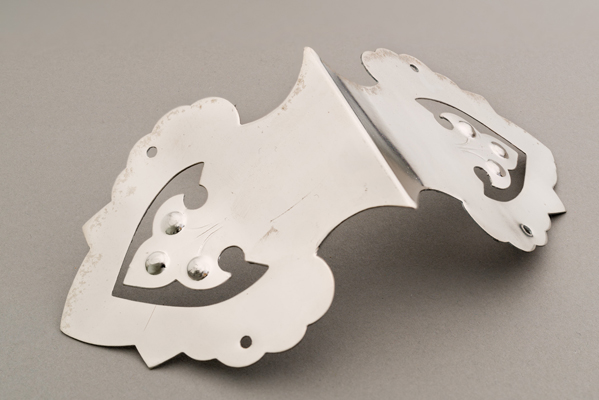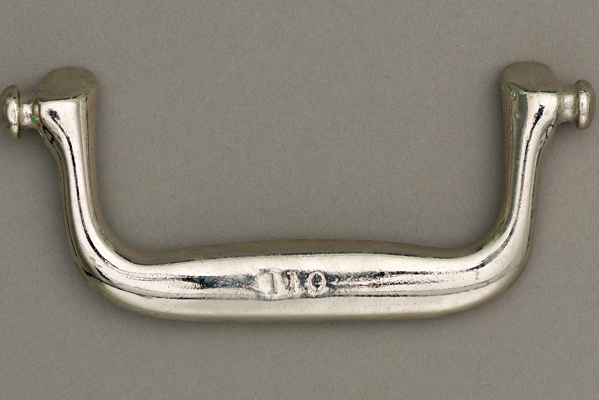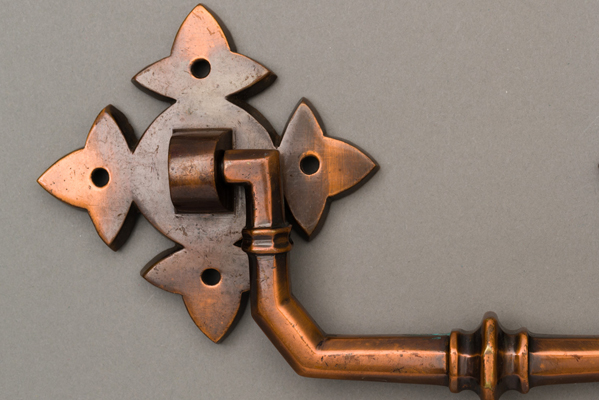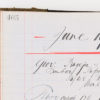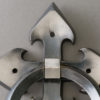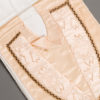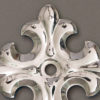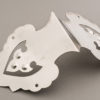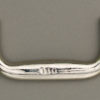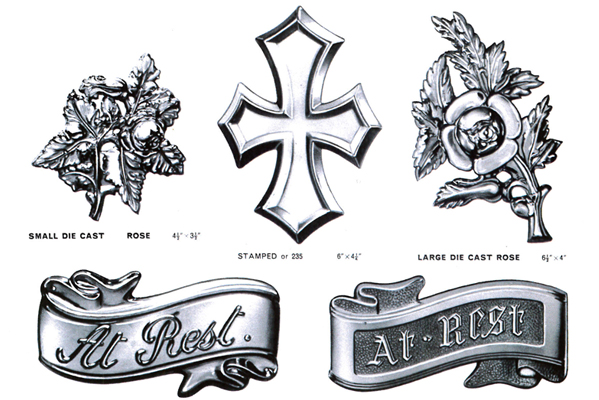
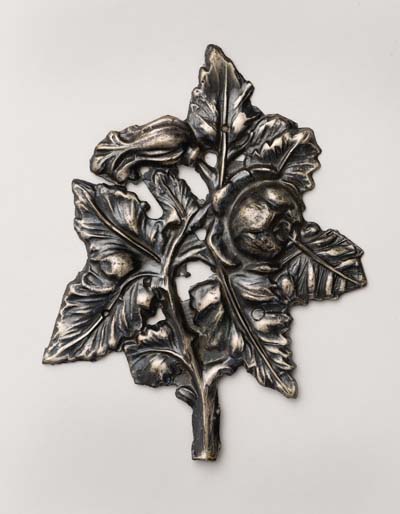
Date: Circa 1950s
Material: Zinc/Nickel plated with Oxi-silver finish
Production:
This is a die cast ornament. Newman Brothers were known for their variety of finishes. The oxi-silver finish that we see here was achieved by first nickel-plating the rose ornament. To produce the black-lacquered finish, platinum was dissolved into nitro-hydrochloric acid, which was then allowed to crystalise. This was then dissolved in spirit of wine, ether, or water. A few drops of this solution are then mixed with any of the bronzing powders, such as crocus, sienna or rouge.
The ornament was then gently heated to allow smooth application of the lacquer. If any areas needed to be lightened, this was done by applying a little liquid ammonia to them with a piece of chamois leather. The ornament is now completely black. In order to achieve the oxi-silver finish, the rose ornament was then polished to remove the black lacquer to reveal silvered parts as seen here.
History:
Roses, which have long served as symbols of the Virgin Mary were popular coffin furniture ornaments amongst Catholics. Mary is known as the “mystic rose” or the “rose without thorns” among some Christians, because of her role as the mother of Jesus Christ.
Since Mary is so closely associated with roses, a traditional prayer that people pray to her while reflecting on the earthly life of her son, Jesus Christ, is called the Rosary. The Rosary, which means “crown of roses,” involves offering a group of prayers to Mary and has been described as a spiritual bouquet.
Roses are also symbolic of a life cut short. Buds represented children, and roses in full bloom, as shown here, may be illustrative of someone in the prime of their life.


